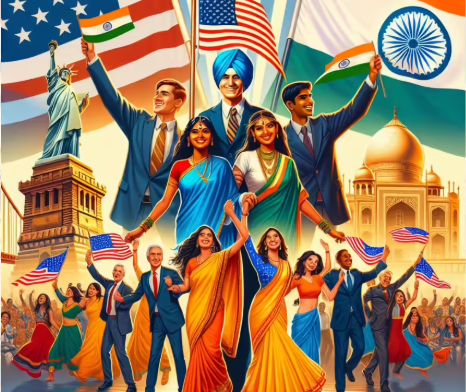Abstract
The Indian diaspora, comprising Indian citizens living abroad, has become a significant global phenomenon. This growth has led to favorable economic policies and diplomatic negotiations between countries, benefiting the origin and host nations. As of May 2024, there are approximately 35.42 million overseas Indians. The Indian diaspora’s uniqueness in a globalized world includes their work culture, traditions, financial habits, resilience, adaptability, social ties, and patriotic identity. The paper suggests initiatives to improve their conditions abroad, such as enhancing social safety nets, emigration policies, citizenship, and economic systems for remittance exchange, leveraging the diaspora’s economic strengths to reclaim India’s title of Vishwaguru.’
Keywords: Diaspora, Remittance, Assimilation, Migration, Citizenship, Diaspora diplomacy, Emigration
Introduction
Indian Diaspora in the Contemporary World
In academic terms, Diaspora refers to individuals of Indian origin residing in foreign countries, whether voluntarily or due to circumstances, opportunities, calamities, wars, or personal choice. Officially, the Indian Diaspora is categorized into Non-resident Indians (NRIs), Persons of Indian Origin (PIOs), and Overseas Citizens of India (OCIs). In 2015, both PIO and OCI cardholders were consolidated under a single OCI category. Diaspora movement and emigration have persisted for centuries, dating back to the Ashokan reign and extending to the contemporary world, where the Indian Diaspora is globally distributed across more than 200 countries, comprising approximately 32 million individuals occupying various positions on the professional spectrum, from global CEOs to IT professionals, skilled or semi-skilled laborers and workers. This phenomenon has evolved into one of the most complex yet influential forces, transforming economic, political, geographical, ethnic, and diplomatic power relations worldwide.
The growing visibility of the Indian Diaspora
Movement of the workforce is not a new phenomenon for India, however, the visibility of this Diaspora has increased multifold since the last two decades with the rise of leaders, CEOs, business tycoons of Indian origin, and holding top executive posts with significant lobbying power within the host countries like Sundar Pichai, Indira Nooyi, Kamala Harris, Rishi Sunak and many more. According to the Global Migration Report 2020, India continues to be the largest country of origin of international migrants with a 17.5 million-strong diaspora across the world, and it received the highest remittance of $78.6 billion (this amounts to a whopping 3.4% of India’s GDP) from Indians living abroad.
This visibility not only provides a better platform for diplomatic negotiation on the international stage but also on the economic front as foreign direct investment & investment opportunities are blooming for the origin as well as host countries as they capitalize on a highly skilled workforce. The celebration of ‘Pravasi Bhartiya Diwas’ on 9th January every year by the government of India also sheds light on the importance of Diasporic soft power diplomacy.
Click Here to Download The Paper


📌Analysis of Bills and Acts
📌 Summary of Reports from Government Agencies
📌 Analysis of Election Manifestos

